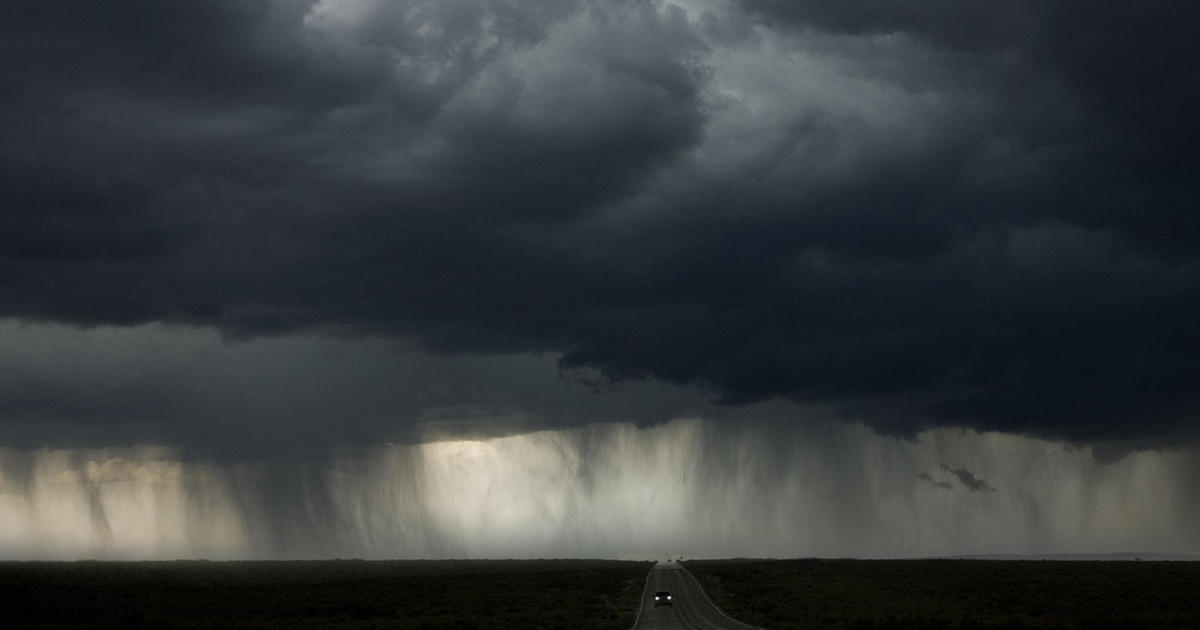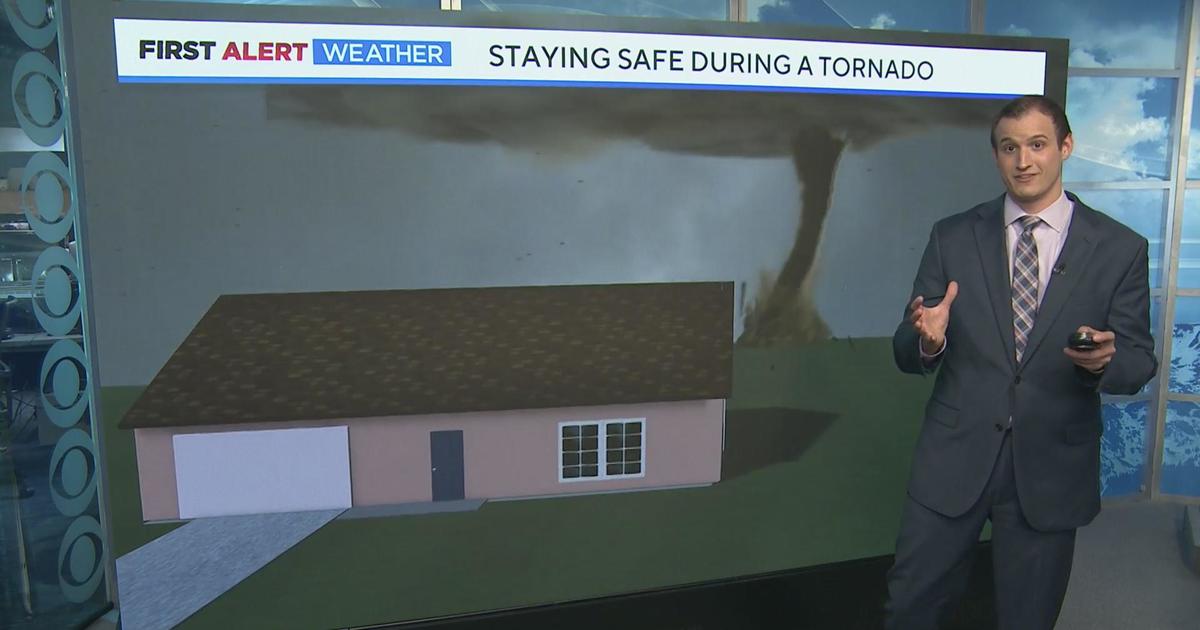Rare Mountain Tornado Touches Down Near Mount Evans
CLEAR CREEK COUNTY, Colo. (CBS4) - It doesn't happen very often, but Colorado had a rare mountain tornado touchdown near Mount Evans. Saturday afternoon at 2:51 pm. Thunderstorms strengthening over the mountains west of Denver were strong enough to produce a weak, short-lived twister. The National Weather Service has analyzed pictures from the area and confirms that it was a bona fide tornado.
Typically, these types of storms can produce what are known as cold air funnels. Which are not tornadoes but do develop from cold air pooling in the upper levels of a thunderstorm. And with differing temperatures at altitude wind shear can cause a funnel-shaped cloud to drop from a thunderstorm. These funnels tend to be very weak and almost never touch the ground.
But in this situation the air entering the bottom of this Mount Evans storm was warm enough to produce a tornado touchdown. The National Weather Service is estimating this to be the second highest tornado ever recorded in the United States. The spot where the touchdown occurred to be roughly at 11,900 feet.
It is estimated that the highest recorded tornado in the U.S. happened in 2004. On July 7 of that year, at 12,000 feet a hiker took a picture of a tornado in Sequoia National Park in California.
What is a tornado?
A tornado is a rapidly rotating column of air dropping from a strong thunderstorm to the ground. That thunderstorm cloud is known as a cumulonimbus cloud.
What causes a tornado?
Inside a cumulonimbus cloud or thunderstorm, you have updrafts and downdrafts. Warm air rises up into the thunderstorm and cold air sinks down in the thunderstorm. Now all air masses have a certain amount of spin, but, the updrafts and downdrafts in a thunderstorm increase that spin inside the storm. This motion creates a horizontal rotating column of air. The rising and dropping air tilt that column vertically and if that column of air extends to touch the ground, Bingo, you have a tornado! The technical term for this process is called "Conservation of Angular Momentum." Have you ever seen an ice skater doing spins on the ice? When the skater pulls their arms in close to their body, they can spin faster and faster.With a thunderstorm, the tighter the spinning air goes, the stronger the rotating column of air gets.
How long can a tornado last?
Some twisters may last only for a couple of minutes and are on the ground for a few feet to a few miles. Other twisters can last several minutes to several hours and travel from a few miles to more than a hundred miles. A few of these huge tornadoes may have paths of destruction that are a mile wide.
When do tornadoes occur?
In Colorado, primetime for tornadoes is from mid May through mid August. Colorado twisters have been reported in 9 out of 12 months of the year.The big month for tornadoes is June. Through the years most of the recorded tornadoes in our state have popped up in the month of June. Most of our tornadoes happen between 1pm and 9 pm. In fact, 88 percent of them occur during this time period. Over half of all twisters threaten between 3pm and 6 pm. If you break it down by county, Weld County in Northeast Colorado is the big winner or loser (depending on how you look at it) in number of tornadoes. In fact, Weld County on average has one of the biggest numbers of tornadoes across the country! The reason for that is primarily due to Weld county's size. It is two to three times larger than most counties in the United States.
Where are tornadoes most likely to form in Colorado?
Tornadoes can occur anywhere in the state of Colorado, but most of them develop in Eastern Colorado. Most of those occur east of Interstate 25.
How is the strength of a tornado measured?
Meteorologists use a scale called the "Enhanced F-scale" to measure the power of a tornado. It is a scale that is based upon how much damage any given tornado produces. An important note about F-scale winds: these precise wind speed numbers are actually guesses and have never been scientifically verified. Different wind speeds may cause similar looking damage from place to place. Even from building to building.




